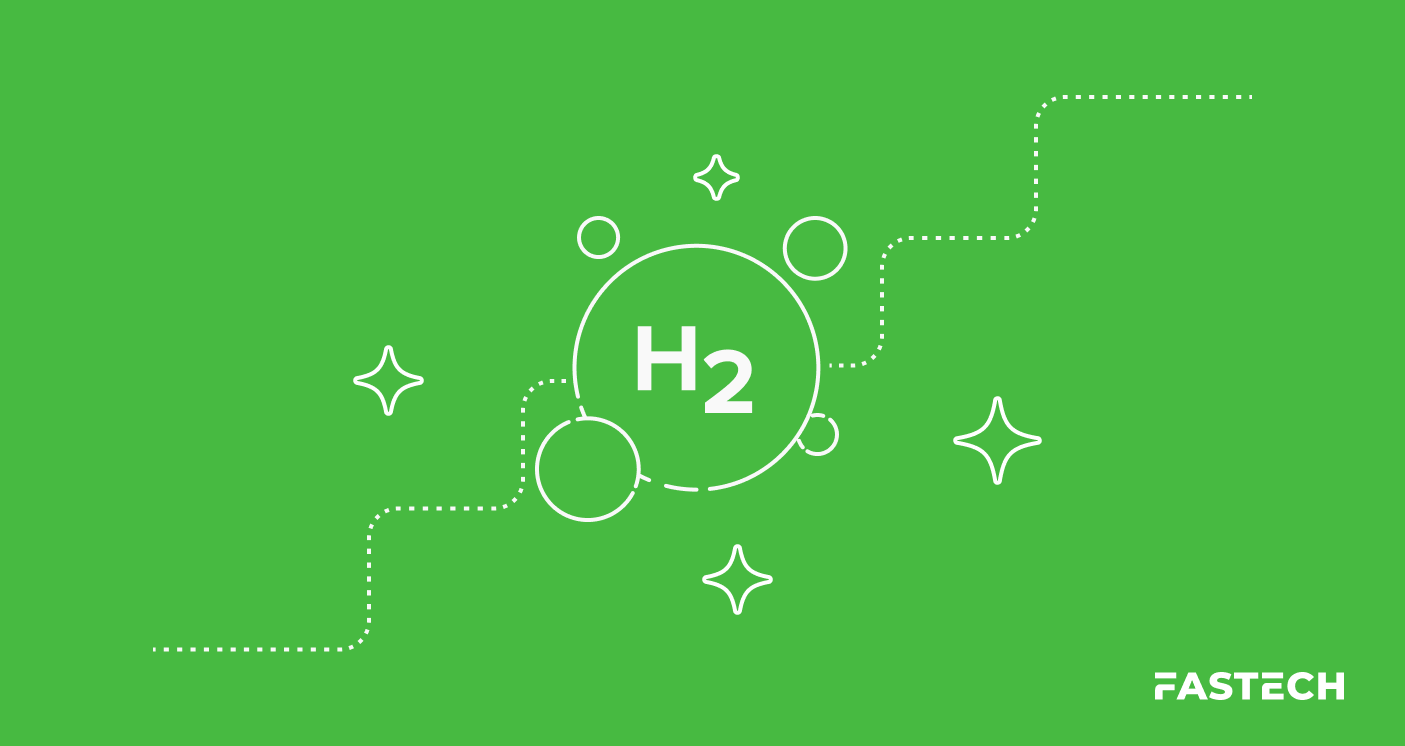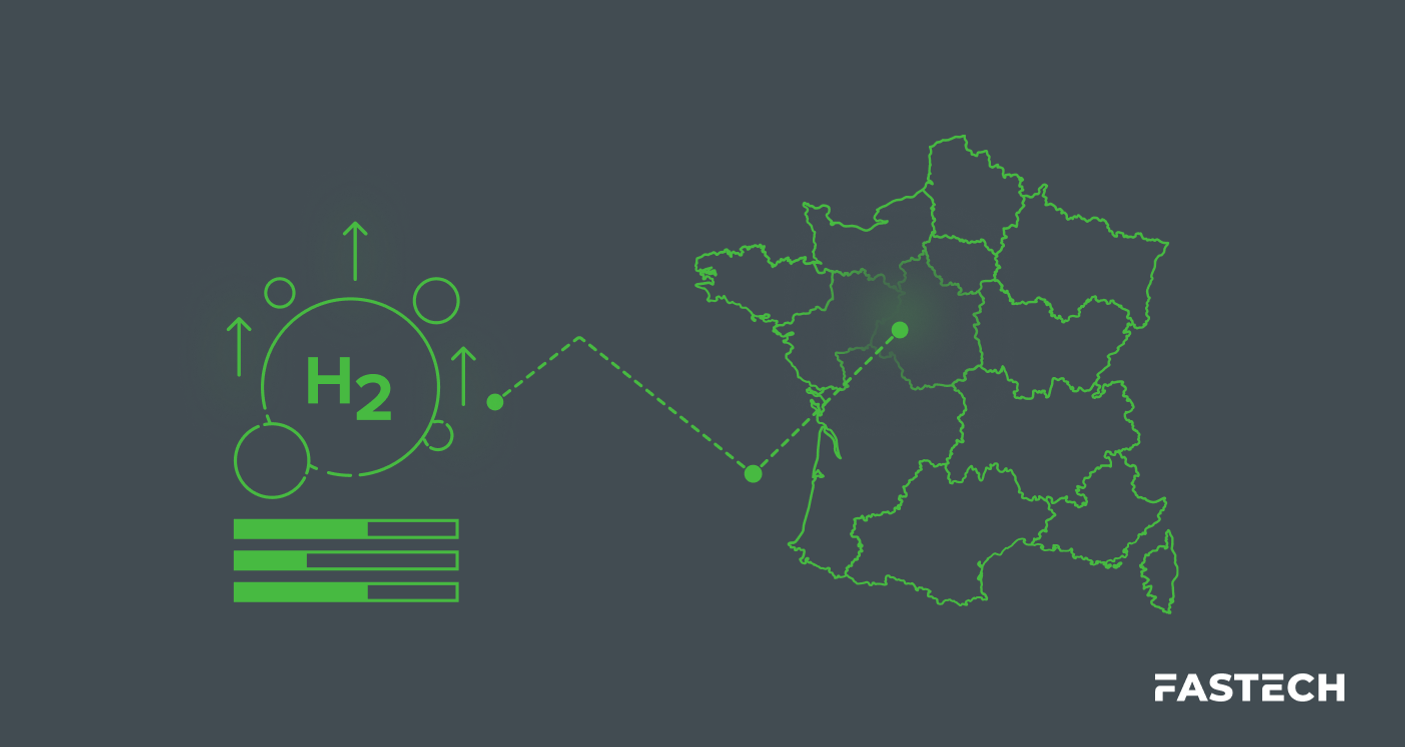Reimagining Energy Through Gold Hydrogen

Reimagining Clean Energy With Gold Hydrogen
Most modern commercial hydrogen is sourced from fossil fuels, undercutting its emission-reduction benefits. Green hydrogen is already shaking up the energy economy, and scientists are already eyeing a new source of gold rush proportions.
Early studies suggest mountain belts may hide large pockets of gaseous hydrogen, ready to tap, much like conventional natural gas. Dubbed gold hydrogen, these deposits form deep underground and could be accessed to deliver new forms of clean, low‑cost fuel.
Before exploring the economics, it helps to know how this hydrogen forms and why geologists once thought it was too rare to matter.
What Is Gold Hydrogen?
Gold hydrogen—also called natural or white hydrogen—is molecular hydrogen stored deep underground in the Earth�’s subsurface. The gas forms when certain rocks chemically react with water, splitting the H2O molecules and releasing hydrogen gas.
In terms of volume, the highest-yielding reaction is serpentinization, where iron‑rich mantle rocks meet water and emit hydrogen. Smaller amounts form through natural irradiation of water and microbes that feed on mineral nutrients.
Similar to other natural gas well operations, drillers could bring this hydrogen to the surface. The raw gas would likely require purification to separate water vapor and other gases, but such steps mirror existing practices in hydrogen production.
Hydrogen of any color burns just as clean, but the energy and emissions required to source it vary widely. Gold hydrogen may prove competitive on both fronts, offering a cost- and carbon-effective supply without the heavy energy load required to make green hydrogen.
The question remains: are these gold hydrogen mines, once thought to be negligible, large and steady enough to support commercial flow rates?
Striking Gold Hydrogen: Why It’s Suddenly on the Map
The initial breakthrough came from Bourakébougou, Mali in 1987, when a shallow well tapped hydrogen pure and vast enough to run a village‑scale power plant. Follow‑up drilling confirmed several hydrogen‑rich layers, hinting that the reservoir replenishes itself over time.
Today, the Bourakébougou‑1 well produces roughly 5-50 tonnes of high-purity hydrogen annually. While impressive for its shallow drill depth, this volume wouldn’t meet industrial demands. Researchers have since asked where else the right recipe for gold may occur.
Using global plate‑tectonic models, a team at GFZ Helmholtz found an answer. They suggest that mountain belts—especially the Alps, Pyrenees, and Himalayas—have ideal ingredients: mantle rock near the surface, groundwater circulation, and cool temperatures that trap the gas.
Their models suggest these regions could generate up to 20 times more hydrogen than rift basins—where geologists typically search—when conditions align. If correct, the idea turns gold hydrogen from a curiosity into a viable possibility for clean energy.
Exploration firms in Europe, the United States, and Australia have since conducted soil gas surveys and drilled test wells to confirm targets in mountainous terrain.
The Potential Upside of Gold Hydrogen
In plentiful supply, gold hydrogen could offer several advantages over its green counterpart.
- Near‑zero upstream carbon footprint: As natural geological formations, rocks supply both the energy and feedstock needed to make gold hydrogen. However, modest power loads would still be needed to run drilling rigs and surface equipment.
- Lower price ceiling: Early estimates hint at costs below $2 per kilogram and, in the best cases, below $1 per kilogram with strong enough flow. Pricing is just a projection until production begins, though.
- Local production: Wells can benefit the local economy while creating new power flows. Direct use would ensure minimal transport costs and supplement local power grids with clean energy.
- Fits existing plans: Gold hydrogen could be used in all the same applications and core infrastructure as green, blue, and other “colors,” adding secure supply as global demand climbs.
These benefits hinge on proving flow rates and steady recharge—facts scientists have documented in only a few places so far. That uncertainty sets up the next challenge: turning geology into bankable projects.
What’s Needed to Bring the Gold Rush to Life
- Better mapping
Geologists still need to refine methods for pinpointing where gold hydrogen forms, migrates, and gathers. Soil‑gas sniffers, satellite imaging, and tectonic simulations may help to chart clearer courses.
- Field tests
Hydrogen’s small molecules leak faster than methane, so specialized well casings and seals may be needed. Pilot wells in Mali and South Australia are helping engineers understand pressure behavior and surface‑level equipment needs.
- Reservoir studies
Since some hydrogen reservoirs seem to recharge naturally, a stronger understanding of these geological processes is required to better envision long-term applications. Pressure and chemistry tests should help pin down the natural production lifecycle of the subterranean supply.
- Clear rules
Safety codes and public policy for hydrogen wells lag behind oil and gas standards. Regulators can adapt existing drilling laws and encourage data sharing to guide safe, responsible developments.
- Early markets.
Even small hydrogen flows can power microgrids or remote site operations, providing drillers with energy and profit proof while larger-revenue wells are developed or deepened. Early markets have already spurred private investment interest from dozens of companies.
How Gold Hydrogen Fits Wider Hydrogen Policy
Most national hydrogen plans combine green (renewable) and blue (gas with carbon capture) hydrogen. Gold hydrogen could add a third, low-carbon supply with low-to-mid energy plants.
That mix aligns with U.S. and E.U. policy goals that prioritize life-cycle emissions. Gold hydrogen that meets those low-emission thresholds may even benefit from existing policies that incentivize clean energy production.
Infrastructure advancements, such as hydrogen hubs in the U.S. and clean fuel corridors in the E.U., can use H2 from any number of sources to forward sustainability goals.
FASTECH’s Focus on the Hydrogen Future
Gold hydrogen is a promising addition to a fast-evolving hydrogen economy. Those first to transition to cleaner energy also position themselves to benefit from the growing body of geographic data and hydrogen technology.
FASTECH brings over 30 years of fuel infrastructure EPC+M experience to every project. We design, build, and maintain fueling, storage, and production sites across North America.
Ready to future‑proof your fuel? Discuss your energy goals with FASTECH.




